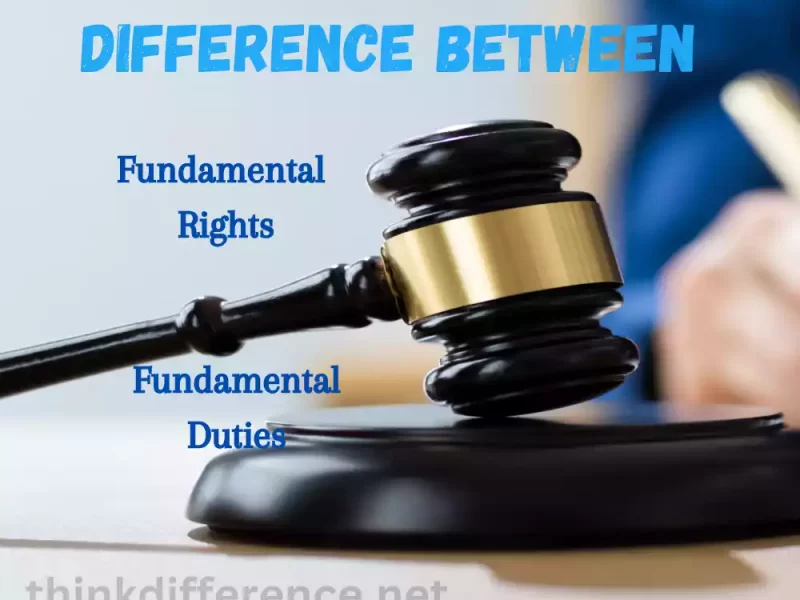Persistent and Consistent are the keys to achieving success over the long term, because they require constant efforts and adherence to a set of rules or standards persistence emphasizes the need for continuous endurance in actions or beliefs. Consistent emphasizes maintaining regularity and stability in behavior or performance.
Persistence is the ability to endure despite obstacles or failures without losing motivation, and trying to reach your goal or reaching your target. It is usually a process of putting in the effort over a long period.
Consistency is the capacity to adhere to established guidelines or conduct that are based on dependability and accuracy Particularly through repetitive actions or activities in a similar manner that result in predictable outcomes. Paying particular attention to the details could often be necessary to achieve an acceptable level of consistency.
What is Persistent?
Persistence is a term used to describe the ability to endure despite challenges. We’ll explore this characteristic from the perspective of a leader management of men isn’t as difficult as some think managers often fail because they adopt the wrong approach when the management of men.

Leaders have to establish performance standards that they won’t be able to accept and must monitor their team members frequently to establish appropriate performance goals which are based on the team the actual level of performance and are in line with the standards they set the team members themselves.
The rookie workforce isn’t able to perform at the level of professionals at the moment, but they can achieve incremental improvements every day to get ahead. Managers must be constant if their strategy is going to be successful. Only persistent leaders will see their team members perform at their best. Persistence isn’t enough. It is also essential to have consistency.
What is Consistent?
The goal of consistency is to ensure that all participants agree to a common set of standards for all an example of this is the leader who has to ensure that the top performers do not get special treatment or are not performing at a subpar level while the rest of the team is focused on achieving their goals every single moment.
The leader’s attitude is crucial to managing performance if he doesn’t have this type of dedication all the results of his work could differ significantly. Let’s turn our attention to ourselves. everyone has hopes and goals in their life’s future. A lot of people don’t know how to get there. Consistency and persistence will only take us so far.

For more awe-inspiring heights to be achieved in our lives, we might require a change in the way we approach our goals. Experts agree that success is contingent on being consistent and persistent.
Making goals and working to achieve them is not enough. One must keep working towards their goals regardless of the difficulties but not stop and think they’ve had enough. It is possible to recharge, but only with a consistent effort can our goals be brought close to being achieved.
Many people quit when they face difficulties they believe are too daunting, when the reality is that their successes may be beyond their reach. Persistence and consistency are the two essential elements to achieve success. They should not be only demonstrated through difficult times but also during times of abundance.
Key Difference Between Persistent and Consistent
Here’s a comparison chart that outlines the key differences and aspects of Persistent and Consistent:
| Aspect | Persistent | Consistent |
|---|---|---|
| Definition | Continuing steadfastly or firmly in some state, purpose, or course of action, especially despite difficulties or obstacles. | Always acting or behaving in the same way, showing regularity and uniformity in actions or behavior over time. |
| Key Feature | Determination and endurance over time, especially when facing challenges. | Regularity and reliability in performance or behavior, maintaining a standard. |
| Primary Focus | Overcoming obstacles and continuing efforts toward a goal. | Maintaining a stable and predictable pattern or standard. |
| Application Example | Persisting on a challenging project or personal goal despite setbacks. | Consistently following a routine or standard in work or personal habits. |
| Benefit | Helps in achieving long-term goals and overcoming significant challenges. | Leads to reliability and trustworthiness in processes or habits. |
| Challenge | Can be mentally and emotionally taxing; requires resilience. | Requires discipline and a clear understanding of the standard to be maintained. |
| Typical Scenario | Continuing | Adhering to a set schedule or set of standards regularly, without much deviation. |
How to Stay Persistent and Consistent
Being consistent and persistent is essential to achieving your goals and progressing across all areas of life. If you’re working towards personal development professional success, or another goal.
Here are some suggestions to help you keep the same level of persistence and perseverance:
- Create clear goals: Clearly define your goals and break them into smaller, manageable steps. Being clear about the things you’d like to accomplish helps to keep your focus and motivation high.
- Make a Plan: Make a structured plan that outlines the steps you’ll need to follow to achieve your objectives. A clear roadmap will help you and help reduce the risk of being overwhelmed.
- Develop habits: It is typically attained through everyday habits. Choose the actions that align with your goals and incorporate them into your daily routine. Repeating your actions builds habits, which makes it easier to remain consistent for a long period of the course of time.
- Keep Motivated and Positive: Surround yourself with positive energy and motivation. Remind yourself regularly of the reasons you have set your goals initially and acknowledge your accomplishments on the way.
- Visualize Success: Utilize visualization strategies to help you see yourself achieving your goals. Visualization can help you believe in achieving your goals, and boost your determination to keep going.
- Be disciplined: It’s essential to keep your self-control in check even when confronted with obstacles or distractions. Learn to resist temptations and remain focused on your goals for the long term.
- Learning from failure: It is a normal part of every journey. Instead of getting discouraged, see the failures as an opportunity to learn. Review what went wrong, adjust your strategy, and keep going towards your goals.
- Responsibility: Share your goals with a trusted person or locate an accountability partner. A person who can help and encourage you can increase your dedication to be consistent and persistent.
- Avoid perfection: Striving for perfection can result in procrastination or burnout. Instead, concentrate on your progress and improve as time passes. Accept the fact that you’ll make mistakes however, those mistakes serve as stepping stones to growth.
- Be flexible: Be open to changing your plans if needed. Life is unpredictable and the circumstances can alter. It is crucial to be flexible and maintain perseverance in the face of difficulties.
- Timing Management Take control of your time efficiently to make sure you dedicate enough time and energy to your goals consistently. Beware of procrastination, and utilize tools such as lists of tasks or time-blocking strategies to keep your focus.
- Do self-care: Taking care of yourself emotionally and physically is essential to maintain regularity. Regular rest, proper nutrition, and managing stress can ensure that you are energized and your mind sharp.
- Be In the present: Practice mindfulness to remain focused and present to the work at the moment. Don’t dwell on past failures or worry about obstacles to come up. The practice of mindfulness helps you remain focused to live in the present.
Interrelationship Between Persistence and Consistency
The connection between consistency and persistence lies in their synergistic impact in achieving success and keeping progress going, whether it’s in the pursuit of personal goals, professional development, or in complex systems such as business and technology.
- Complementary Roles: Persistence is the ability to endure with determination despite obstacles or delays to achieve the desired result, and consistency is the capacity to perform actions or behavior often to maintain a particular standard. Together, they form an incredibly powerful situation where perseverance pushes you to overcome obstacles and ensures constant growth.
- Enhanced Efficiency: For achieving goals Persistence lets you stay on the path even in difficult situations and consistency aids in building momentum and keeping it going. This combination often makes successful efforts different from ones that fail.
- Habit Formation and Personal Growth Persistence: aids in the beginning and ongoing process of personal growth or habit formation. Likewise, constant practice ensures that the new habits become regular, leading to improvements and long-term change.
- Technology and business: In technology systems, persistence is vital to maintaining data integrity and continuity. It also ensures that systems run efficiently and reliably. In the business world, persistence in strategy and vision, coupled with consistent operational and execution, can lead to stability and growth that lasts for a long time.
- Feedback Loop Consistency and persistence: Continuous actions can help build the resilience and endurance of a person, as regular practice can make it easier to persevere even in the face of hardship. A persistent attitude will encourage more consistency in efforts, by highlighting the importance of adhering to routines or methods.
Which Should It Be Used As?
The context and the goal will help you determine if the traits of persistence or consistency is appropriate.
Here are some instances to illustrate when each of the traits could be appropriate:
1. Life in the private: Consistency and perseverance are crucial characteristics when it comes to setting goals for the long term like discovering the next big thing or completing an ambitious undertaking. Maintaining healthy lifestyle habits like regular exercise or adhering to a diet program.
2. Life in the professional: Persistence is helpful when trying to get a job or promotion. Consistent efforts over time could be required to achieve success. Constanta Consistency is essential to keep the highest standards in an office setting, establishing trust between coworkers and customers as well as ensuring reliability in the delivery of your services. Aim For High-Grade Education And Get Results Now.
3. Education: Persistence is a great tool in preparing for difficult tests or working on challenging projects and it’s essential to maintain a consistent approach to developing good habits for studying; it is possible to make a schedule each day to finish your homework or complete assignments such as.
4. Sports: Perseverance is a great tool when faced with challenges in sports competitions. Persistence can aid athletes in improving their performance and improve their skills in particular sports by putting in the effort regardless of failures or setbacks.
Consistency is essential to stay healthy and avoid injuries by following training programs or by implementing appropriate methods and exercises. The choice of persistence or perseverance Which will yield better outcomes? In certain situations, both characteristics may be needed to be successful.
Conclusion
Consistency and persistence have significant features in common. Their applications and examples differ significantly. Perseverance is the ability to continue working toward your goal despite of challenges consistency refers to the maintenance of a standard established in time.
Knowing when to apply each characteristic will help people make educated decisions about when to be most effective. Persistence should be used whenever perseverance, enthusiasm and aplomb are required, the consistency of the person provides stability and precision. People can be more successful by using both attributes in both the workplace as well as personal lives.



